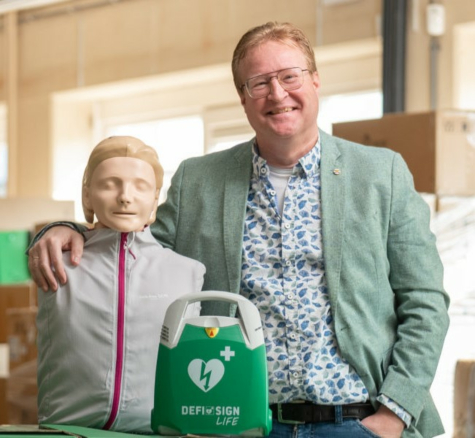Child resuscitation

Performing CPR on a child is one of the most dramatic events you can experience as an ambulance professional. In the 10 years that I have worked as an ambulance nurse, I have unfortunately experienced it once. A child of only 7 months old did not react anymore to its parents' calls and had to be resuscitated. A very intense event that took place at the beginning of my ambulance career.
Much of what happened then is still clear in my mind. Technically, everything went as we had practiced many times at the ambulance station. With two ambulance teams, we did everything we could to resuscitate the baby. A remarkable moment was that everyone in the living room was as quiet as a mouse: you could only hear the sounds of our work. A dog that was also present was sitting in a corner on the floor, waiting to see what would happen. I think the dog had already sensed that things were not going well... We had gotten the heart going again, and the baby was transported "with rhythm and output" as they say in professional terms, but in the evening the baby died in hospital. We later found out that the baby had a congenital heart defect, which had not previously been detected.
Fortunately, it is not common for children to need resuscitation. When it does happen, it is often due to an airway or breathing problem, not blood circulation. An AED is therefore not often used on children.
Yet, in recent years children's lives have been saved by AEDs! In the protocols we see more and more clearly that the AEDs have a role in child resuscitation. Children over the age of 8 years old, who weigh about 25 kg are physiologically almost equal to adults and may be resuscitated the same way. AEDs also have a place in resuscitating children under 8 years old, preferably using one that is designed for children. However, if there is no other option, an AED with adult electrodes may be used.
It is possible for most AEDs today to be made suitable for children. Some manufacturers provide children’s electrodes for this purpose. As soon as the electrodes are connected, the AED recognizes them and adjusts the shock protocol accordingly. Other manufacturers have provided a “child mode” setting, which can be switched on with a button to adjust the level of shock.
Fortunately, it is rare for a child to need resuscitation, but if it does happen, it is good to know that the AEDs can also play a role.
Pieter Joziasse